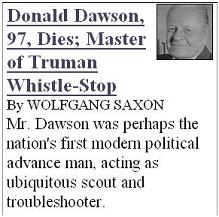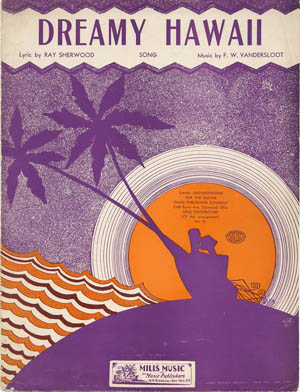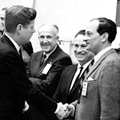Saturday, December 31, 2005
Friday, December 30, 2005
Friday December 30, 2005
or:
We are stardust,
We are golden,
continued
1971:

1994:

Joni Mitchell, Turbulent Indigo
"Some call them
'Emissaries from Heaven,'
others say the 'New Kids'
or even the
'Children of the New Earth.'
They are best known as
the Indigo Children…."
— Brood Indigo

Children of the Damned (1963)
(Set at
St. Dunstan-in-the-East Church,
London)
Related material:
Shining Through
on
May 19, 2005,
St. Dunstan's Day–

This was the opening date for
the final episode of Star Wars.
Friday December 30, 2005
it can happen to you.”
— Sinatra
404 – Page Not Found
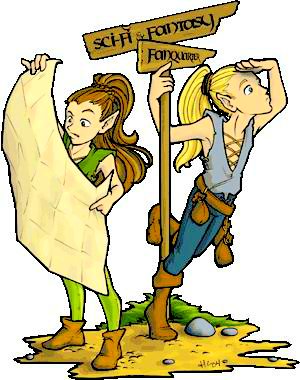
From Elfwood
Related material:
“An Instance of
the Fingerpost”
at Log24
Friday December 30, 2005
Expression
Expression is an impossible word.
If you want to use it
I think you have to
explain it further…
— Ad Reinhardt,
Art as Art
“… an equation is a very
abstract expression
of knowledge
about something.”
— The Hidden Side
of Visualization
Well, yes.
For example:

Abstract Expression,
pixels on screen, 12/30/05
|
The Scope and Limits
of Quotation (pdf), in The Philosophy of Donald Davidson, ed. L. E. Hahn, Open Court Publishers, 1999, pp. 691-714, by Dr. Ernest Lepore, Rutgers University: “… an assumption I wish to reject, namely, that in quotation an abstract expression (shape) is denoted…. Since Davidson, however, only says ‘we may take [an expression] to be an abstract shape’ [1979, p.85, my emphasis], his theory is compatible with expressions being something else. We need only find something that can be instantiated by radically differently shaped objects. Whatever it is must be such that written tokens, spoken tokens, signed tokens, Braille tokens, Semaphore tokens, finger language tokens, and any other way in which words can be produced, can be instantiated by it…. Such entities might
Reference: Davidson, D., 1979, “Quotation,” in Inquiries into Truth and Interpretation , Oxford, Oxford University Press, 1984, pp.79-92. |
For more on zero and other entities,
see Is Nothing Sacred?
For more on Davidson,
see Shema .
Thursday, December 29, 2005
Thursday December 29, 2005
Express
You've got to make him
Express himself
Hey, hey, hey, hey
— Madonna
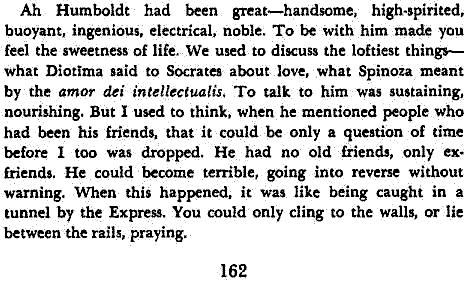
Related material on trains:
Davenport's Express
and End of Days.
Related material on 162:
Dogma Part II: Amores Perros,
The Matthias Defense,
The Still Point and the Wheel,
Mark, and Confession.
Related material on
self-expression:
|
Wishmaster 3:
SciFi channel, |

|
"This world is not conclusion;
a sequel stands beyond."
— Emily Dickinson
Thursday December 29, 2005
Parallel Lines
Meet at Infinity
| From Log24, Dec. 16, 2005: |
From today's New York Times, a man who died (like Charlie Chaplin and W. C. Fields) on Christmas Day: |
From Log24, Dec. 6, 2002,
Santa Versus the Volcano:
Well if you want to ride
you gotta ride it like you find it.
Get your ticket at the station
of the Rock Island Line.
— Lonnie Donegan
(d. Nov. 3, 2002)

The Rock Island Line's namesake depot
in Rock Island, Illinois
Wednesday, December 28, 2005
Wednesday December 28, 2005
Because shit happens.”
— caption on a poster ridiculing
Diebold voting machines
“In addition to the Diebold Group, he started John Diebold Inc., an investment firm, in 1967. It financed such ventures as a computer leasing company and a well-known manufacturer of polling machines.”
This was written by Jennifer Bayot, who ordinarily covers business news for the Times. Her sly reference to “a well-known manufacturer of polling machines” is apparently to the widely scorned Diebold Election Systems. It appears to have no basis in fact.
Supporting this view–
Larry McShane, Associated Press:
“… his consulting firm John Diebold & Associates…. had no connection to electronic equipment company Diebold Inc.”
Richard Waters in the Financial Times:
John Diebold “was not related to the [late] Charles Diebold, a 19th century entrepreneur whose company, named Diebold, has gone on to become a leading maker of automated teller machines and voting machines.”
Tuesday, December 27, 2005
Tuesday December 27, 2005
(continued)
The Pennsylvania lottery
on St. Stephen's Day–
Midday: 105
Evening: 064
From a new
branch of theology,
lottery hermeneutics:
See Log24, 1/05,
Death and the Spirit,
and the 64 hexagrams of
the box-style I Ching.
From the Wikipedia
article on hermeneutics:
(See also Hitler's Still Point:
A Hate Speech for Harvard.)
Tuesday December 27, 2005
John Diebold
Diebold died yesterday,
Boxing Day:

From Rand Careaga,
The Diebold Variations
Click on the above
for related posters.
Related material
from June 2005:
and
“Visionary”
Monday, December 26, 2005
Monday December 26, 2005
Boxing Day
In the box-style I Ching
Hexagram 34,
The Power of the Great,
is represented by
 .
.
Art is represented
by a box
(Hexagram 20,
Contemplation, View)
 .
.
And of course
great art
is represented by
an X in a box.
(Hexagram 2,
The Receptive)
 .
.
“… as a Chinese jar still
Moves perpetually
in its stillness”
“… at the still point,
there the dance is.”
— T. S. Eliot
 A Jungian on this six-line figure: “They are the same six lines that exist in the I Ching…. Now observe the square more closely: four of the lines are of equal length, the other two are longer…. For this reason symmetry cannot be statically produced and a dance results.” |
For those who prefer
technology to poetry,
there is the Xbox 360.
(Today is day 360 of 2005.)
Monday December 26, 2005
Wren Day
“St. Stephen’s Day [Dec. 26] is a national holiday in Ireland, but the celebrations have little connection to the Saint.”
This day in Ireland is instead devoted to a barbaric ritual, “the hunting of the wren.”
Let us therefore recall a more civilized figure– St. Christopher Wren— whose feast day is Feb. 25.
From Log24 on that date in 2005:
… Only by the form,
the pattern,
Can words or music reach
The stillness, as
a Chinese jar still
Moves perpetually in its stillness.
Not the stillness of the violin,
while the note lasts,
Not that only, but
the co-existence,
Or say that the end
precedes the beginning,
And the end
and the beginning
were always there
Before the beginning
and after the end.
And all is always now.
Sunday, December 25, 2005
Sunday December 25, 2005
(continued)
Compare and contrast:
Click on pictures for details.
"… die Schönheit… [ist] die
richtige Übereinstimmung
der Teile miteinander
und mit dem Ganzen."
"Beauty is the proper conformity
of the parts to one another
and to the whole."
— Werner Heisenberg,
"Die Bedeutung des Schönen
in der exakten Naturwissenschaft,"
address delivered to the
Bavarian Academy of Fine Arts,
Munich, 9 Oct. 1970, reprinted in
Heisenberg's Across the Frontiers,
translated by Peter Heath,
Harper & Row, 1974
Saturday, December 24, 2005
Saturday December 24, 2005
(continued)

The figures are:
A symbol of Apollo from
Balanchine's Birthday and
A Minature Rosetta Stone,
a symbol of pure reason from
Visible Mathematics and
Analogical Train of Thought,
a symbol of Venus from
Why Me? and
To Graves at the Winter Solstice,
and, finally, a more
down-to-earth symbol,
adapted from a snowflake in

Those who prefer their
theological art on the scary side
may enjoy the
Christian Snowflake
link in the comments on
the "Logos" entry of
Orthodox Easter (May 1), 2005.
Saturday December 24, 2005
“Concept (scholastics’ verbum mentis)–
theological analogy of Son’s procession
as Verbum Patris, 111-12″
— index to Joyce and Aquinas,
by William T. Noon,
Society of Jesus,
Yale University Press 1957,
second printing 1963, page 162
Then there is
the Daughter’s procession:

For the String Theory
Appreciation Club, see
Raoul Bott, 1923-2005.
For another
imaginary club, see
The Club Dumas (below).
For a non-imaginary club,
see the organization
that included Noon (above).
Saturday December 24, 2005
— Foucault’s Pendulum
by Umberto Eco,
Professor of Semiotics
The Club Dumasby Arturo Perez-Reverte
|
“Only gradually did I discover
what the mandala really is:
‘Formation, Transformation,
Eternal Mind’s eternal recreation'”
(Faust, Part Two)
Wednesday, December 21, 2005
Wednesday December 21, 2005
For the feast of
St. Francis Scott Key Fitzgerald
as Big as
the Monster
From Fitzgerald’s The Diamond as Big as the Ritz:
“Now,” said John eagerly, “turn out your pocket and let’s see what jewels you brought along. If you made a good selection we three ought to live comfortably all the rest of our lives.”
Obediently Kismine put her hand in her pocket and tossed two handfuls of glittering stones before him.
“Not so bad,” cried John, enthusiastically. “They aren’t very big, but– Hello!” His expression changed as he held one of them up to the declining sun. “Why, these aren’t diamonds! There’s something the matter!”
“By golly!” exclaimed Kismine, with a startled look. “What an idiot I am!”
“Why, these are rhinestones!” cried John.
From The Hawkline Monster, by Richard Brautigan:
“What are we going to do now?” Susan Hawkline said, surveying the lake that had once been their house.
Cameron counted the diamonds in his hand. There were thirty-five diamonds and they were all that was left of the Hawkline Monster.
“We’ll think of something,” Cameron said.
“A disciple of Ezra Pound, he adapts to the short story the ideogrammatic method of The Cantos, where a grammar of images, emblems, and symbols replaces that of logical sequence. This grammar allows for the grafting of particulars into a congeries of implied relation without subordination. In contrast to postmodernists, Davenport does not omit causal connection and linear narrative continuity for the sake of an aleatory play of signification but in order to intimate by combinational logic kinships and correspondences among eras, ideas and forces.”
— When Novelists Become Cubists:
The Prose Ideograms of Guy Davenport,
by Andre Furlani
“T.S. Eliot’s experiments in ideogrammatic method are equally germane to Davenport, who shares with the poet an avant-garde aesthetic and a conservative temperament. Davenport’s text reverberates with echoes of Four Quartets.”
“At the still point,
there the dance is.”
— T. S. Eliot, Four Quartets,
quoted in the epigraph to
the chapter on automorphism groups
in Parallelisms of Complete Designs,
by Peter J. Cameron,
published when Cameron was at
Merton College, Oxford.
“As Gatsby closed the door of
‘the Merton College Library’
I could have sworn I heard
the owl-eyed man
break into ghostly laughter.”
Wednesday December 21, 2005
| To Graves at the Winter Solstice
“There is one story and one story only Dwell on her graciousness, dwell on her smiling, — Robert Graves,   |
Tuesday, December 20, 2005
Tuesday December 20, 2005
“Heaven– Where Is It?
How Do We Get There?”
To air on ABC
Tuesday, Dec. 20
(John Spencer’s birthday)
“And we may see
the meadow in December,
icy white and crystalline.”
Monday, December 19, 2005
Monday December 19, 2005
Monday December 19, 2005
continued
“There is an
underlying timelessness
in the basic conversation
that is mathematics.”
— Barry Mazur (pdf)
“The authors of the etiquette book The Art of Civilized Conversation say that conversation’s versatility makes it ‘the Swiss Army knife of social skills.'”
the broken beer bottle
school of etiquette:
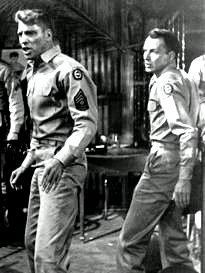
Monday December 19, 2005
underlying timelessness
in the basic conversation
that is mathematics."
— Barry Mazur (pdf)
It's Quarter to Three
(continued):
but you gotta be
true to your code."
— Sinatra
Today is the birthday of Helmut Wielandt (Dec. 19,
"In his speech accepting membership of the Heidelberg Academy in 1960 he said:-
It is to one of Schur's seminars that I owe the stimulus to work with permutation groups, my first research area. At that time the theory had nearly died out. It had developed last century, but at about the turn of the century had been so completely superseded by the more generally applicable theory of abstract groups that by 1930 even important results were practically forgotten – to my mind unjustly."
Permutation groups are still not without interest. See today's updates (Notes [01] and [02]) to Pattern Groups.
Sunday, December 18, 2005
Sunday December 18, 2005
Steven Spielberg,
director of “1941”–
Sunset for Sydney Leff,
who died at 104
on December 10,
and is said to have drawn
the illustration below.
The sun also rises,
and the sun goes down,
and hurries to its place
where it rises.
— Ecclesiastes 1:5
From Log24 Sunday a week ago:
a link to Satori at Pearl Harbor
and to
Sunday December 18, 2005
The Meadow
"Heaven– Where Is It?
How Do We Get There?"
To air on ABC
Tuesday, Dec. 20
(John Spencer's birthday)
By Trevanian, who died on
Wednesday, Dec. 14, 2005:
|
From
Shibumi "Well… the flow of the play was just right, and it began to bring me to the meadow. It always begins with some kind of flowing motion… a stream or river, maybe the wind making waves in a field of ripe rice, the glitter of leaves moving in a breeze, clouds flowing by. And for me, if the structure of the Go stones is flowing classically, that too can bring me to the meadow." "The meadow?" "Yes. That's the place I expand into. It's how I recognize that I am resting." "Is it a real meadow?" "Yes, of course." "A meadow you visited at one time? A place in your memory?" "It's not in my memory. I've never been there when I was diminished." "Diminished?" "You know… when I'm in my body and not resting." "You consider normal life to be a diminished state, then?" "I consider time spent at rest to be normal. Time like this… temporary, and… yes, diminished." "Tell me about the meadow, Nikko." "It is triangular. And it slopes uphill, away from me. The grass is tall. There are no animals. Nothing has ever walked on the grass or eaten it. There are flowers, a breeze… warm. Pale sky. I'm always glad to be the grass again." "You are the grass?" "We are one another. Like the breeze, and the yellow sunlight. We're all… mixed in together." "I see. I see. Your description of the mystic experience resembles others I have read. And this meadow is what the writers call your 'gateway' or 'path.' Do you ever think of it in those terms?" "No." "So. What happens then?" "Nothing. I am at rest. I am everywhere at once. And everything is unimportant and delightful. And then… I begin to diminish. I separate from the sunlight and the meadow, and I contract again back into my bodyself. And the rest is over." Nicholai smiled uncertainly. "I suppose I am not describing it very well, Teacher. It's not… the kind of thing one describes." "No, you describe it very well, Nikko. You have evoked a memory in me that I had almost lost. Once or twice when I was a child… in summer, I think… I experienced brief transports such as you describe. I read once that most people have occasional mystic experiences when they are children, but soon outgrow them. And forget them…." |
"And we may see
the meadow in December,
icy white and crystalline."
"Midnight Sun"
Saturday, December 17, 2005
Saturday December 17, 2005
the Absolute
— Emily Dickinson
From John Spencer's birthday,
December 20, in 2003:
Riddled:
The Absolutist Faith
of The New York Times
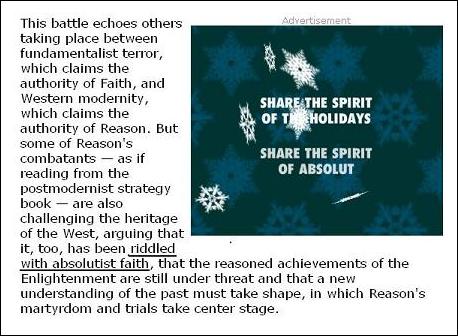
White and Geometric, but not Eternal.
(See previous entry.)
The title of this entry
comes from within
an entry of June 2, 2005,
Saturday December 17, 2005
For John Spencer,
who died on December 16:
"He was a kind, sweet, funny man…
a man who made your words come to life
in ways you would never expect."
— James Mangold, quoted in
today's Los Angeles Times

Related material:
Entries from the date
of Spencer's death
and
White, Geometric, and Eternal
(from Dec. 20, 2003–
Spencer's birthday).
Saturday December 17, 2005
"…that ineffable constellation of talents that makes the player of rank: a gift for conceiving abstract schematic possibilities; a sense of mathematical poetry in the light of which the infinite chaos of probability and permutation is crystallized under the pressure of intense concentration into geometric blossoms; the ruthless focus of force on the subtlest weakness of an opponent."
— Trevanian,
Shibumi
'Even black has various subtle shades,' Sosuke nodded."
— Yasunari Kawabata,
The Old Capital
"The Zen disciple sits for long hours silent and motionless, with his eyes closed. Presently he enters a state of impassivity, free from all ideas and all thoughts. He departs from the self and enters the realm of nothingness. This is not the nothingness or the emptiness of the West. It is rather the reverse, a universe of the spirit in which everything communicates freely with everything, transcending bounds, limitless."
— Yasunari Kawabata,
Nobel lecture, 1968
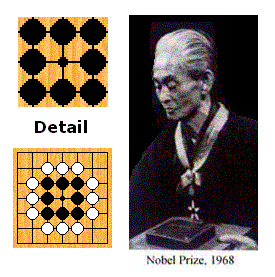
Friday, December 16, 2005
Friday December 16, 2005
A Wintry Friday Afternoon
Three years ago today in the New York Times:
“The book was Will Durant’s Story of Philosophy, and I was 12 or 13 when I carried it home from the library one wintry Friday afternoon.
I cannot even remember the novel that accompanied it. But I remember that I was curled up on our beat-up old couch, the one with the huge embarrassing rip where my older sister would position me to sit demurely, my dress fanned out over the damage, when her dates arrived. I was reading Durant’s section on Plato, struggling to understand his theory of the ideal Forms that lay in inviolable perfection out beyond the phantasmagoria. (That was the first, and I think the last, time that I encountered that word.)
The Forms are abstract but real, I read, graspable only through the eyes of the mind, pure reason. And it seemed to me, that dark winter afternoon as I read, that I was grasping them; that I, a yiddishe maidel of questionable worth, was seeing with the eyes of my mind exactly what that ancient Greek philosopher had seen; that just like him I was out beyond the phantasmagoria, suspended in formal perfection; that I was out beyond myself, had almost lost all touch with who I even was, and it was . . . bliss.”
— Rebecca Goldstein
Related material:
Davenport’s Express.Update of 6:14 PM EST:
Whistle Stop

For the late John Spencer,
actor on NBC’s “West Wing”— “When was the last time
you went to a meeting?”
— “AA?…. What meeting
could I possibly go to?”
— “Mine.”
Friday December 16, 2005
A Brief Chronology
In 1946, Robert Graves published “King Jesus, an historical novel based on the theory and Graves’ own historical conjecture that Jesus was, in fact, the rightful heir to the Israelite throne… written while he was researching and developing his ideas for The White Goddess.”
In 1948, C. S. Lewis finished the first draft of The Lion, The Witch, and The Wardrobe, a novel in which one of the main characters is “the White Witch.”
In 1948, Robert Graves published The White Goddess.
In 1949, Robert Graves published Seven Days in New Crete [also titled Watch the North Wind Rise], “a novel about a social distopia in which Goddess worship is (once again?) the dominant religion.”
Lewis died on November 22, 1963, the day John F. Kennedy was killed.
Related material:
Log24, December 10, 2005
Graves died on December 7 (Pearl Harbor Day), 1985.
Related material:
Log24, December 7, 2005, and
Log24, December 11, 2005
Jesus died, some say, on April 7 in the year 30 A.D.
Related material:
Art Wars, April 7, 2003:
Geometry and Conceptual Art,Eight is a Gate, and
Plato’s Diamond

— Motto of
Plato’s Academy
bless me, what do they
teach them at these schools?”
the Narnia Chronicles
“How much story do you want?”
— George Balanchine
Thursday, December 15, 2005
Thursday December 15, 2005
The Cinematic
Imagination,
or
“Frida” meets
“Under the Volcano”

A scene from “Frida”
and a scene from the
Day of the Dead festival,
Cuernavaca, 10/30/04
Related material:
For the Man in Black
(Log 24, 9/13/03)
and
For a Man in Black
(Log 24, 11/17/05).
Thursday December 15, 2005
“Mahlburg likens his approach to an analogous one for deciding whether a dance party has an even or odd number of attendees. Instead of counting all the participants, a quicker method is to see whether everyone has a partner—in effect making groups that are divisible by 2.
In Mahlburg’s work, the partition numbers play the role of the dance participants, and the crank splits them not into couples but into groups of a size divisible by the prime number in question. The total number of partitions is, therefore, also divisible by that prime.
Mahlburg’s work ‘has effectively written the final chapter on Ramanujan congruences,’ Ono says.
‘Each step in the story is a work of art,’ Dyson says, ‘and the story as a whole is a sequence of episodes of rare beauty, a drama built out of nothing but numbers and imagination.'”
— Erica Klarreich in Science News Online, week of June 18, 2005
This would seem to meet the criteria set by Fritz Leiber for “a story that works.” (See previous entry.) Whether the muse of dance (played in “Xanadu” by a granddaughter of physicist Max Born– see recent entries) has a role in the Dyson story is debatable.
|
Born Dec. 11, 1882, Breslau, Germany. Died Jan. 5, 1970, Göttingen, |
 Max Born |
Those who prefer less abstract stories may enjoy a mythic tale by Robert Graves, Watch the North Wind Rise, or a Christian tale by George MacDonald, At the Back of the North Wind.
Related material:
“The valley spirit never dies. It’s named the mystic woman.”
For an image of a particular
incarnation of the mystic woman
(whether as muse, as goddess,
or as the White Witch of Narnia,
I do not know) see Julie Taymor.“Down in the valley,
valley so low,
hang your head over,
hear the wind blow.”“Which is the sound of the land
Full of the same wind
That is blowing in
the same bare placeFor the listener,
who listens in the snow,
And, nothing himself, beholds
Nothing that is not there
and the nothing that is.”
Wednesday, December 14, 2005
Wednesday December 14, 2005
to Eternity
For Loomis Dean
See also
For Rita Moreno
on Her Birthday
(Dec. 11, 2005)
|
Los Angeles Times
Tuesday, Dec. 13, 2005
OBITUARIES 
LOOMIS DEAN Loomis Dean, 88; By Jon Thurber, Times Staff Writer
Loomis Dean, a Life magazine photographer who made memorable pictures of the royalty of both Europe and Hollywood, has died. He was 88.
Dean died Wednesday [December 7, 2005] at Sonoma Valley Hospital in Sonoma, Calif., of complications from a stroke, according to his son, Christopher. In a photographic career spanning six decades, Dean's leading images included shirtless Hollywood mogul Darryl F. Zanuck trying a one-handed chin-up on a trapeze bar, the ocean liner Andrea Doria listing in the Atlantic and writer Ernest Hemingway in Spain the year before he committed suicide. One of his most memorable photographs for Life was of cosmopolitan British playwright and composer Noel Coward in the unlikely setting of the Nevada desert. Dean shot 52 covers for Life, either as a freelance photographer or during his two stretches as a staffer with the magazine, 1947-61 and 1966-69. After leaving the magazine, Dean found steady freelance work in magazines and as a still photographer on film sets, including several of the early James Bond movies starring Sean Connery. Born in Monticello, Fla., Dean was the son of a grocer and a schoolteacher. When the Dean family's business failed during the Depression, they moved to Sarasota, Fla., where Dean's father worked as a curator and guide at the John and Mable Ringling Museum of Art. Dean studied engineering at the University of Florida but became fascinated with photography after watching a friend develop film in a darkroom. He went off to what is now the Rochester Institute of Technology, which was known for its photography school. After earning his degree, Dean went to work for the Ringling circus as a junior press agent and, according to his son, cultivated a side job photographing Ringling's vast array of performers and workers. He worked briefly as one of Parade magazine's first photographers but left after receiving an Army Air Forces commission during World War II. During the war, he worked in aerial reconnaissance in the Pacific and was along on a number of air raids over Japan. His first assignment for Life in 1946 took him back to the circus: His photograph of clown Lou Jacobs with a giraffe looking over his shoulder made the magazine's cover and earned Dean a staff job. In the era before television, Life magazine photographers had some of the most glamorous work in journalism. Life assigned him to cover Hollywood. In 1954, the magazine published one of his most memorable photos, the shot of Coward dressed for a night on the town in New York but standing alone in the stark Nevada desert. Dean had the idea of asking Coward, who was then doing a summer engagement at the Desert Inn in Las Vegas, to pose in the desert to illustrate his song "Mad Dogs and Englishmen Go Out in the Midday Sun." As Dean recalled in an interview with John Loengard for the book "Life Photographers: What They Saw," Coward wasn't about to partake of the midday sun. "Oh, dear boy, I don't get up until 4 o'clock in the afternoon," Dean recalled him saying. But Dean pressed on anyway. As he related to Loengard, he rented a Cadillac limousine and filled the back seat with a tub loaded with liquor, tonic and ice cubes — and Coward. The temperature that day reached 119 as Coward relaxed in his underwear during the drive to a spot about 15 miles from Las Vegas. According to Dean, Coward's dresser helped him into his tuxedo, resulting in the image of the elegant Coward with a cigarette holder in his mouth against his shadow on the dry lake bed. "Splendid! Splendid! What an idea! If we only had a piano," Coward said of the shoot before hopping back in the car and stripping down to his underwear for the ride back to Las Vegas. In 1956, Life assigned Dean to Paris. While sailing to Europe on the Ile de France, he was awakened with the news that the Andrea Doria had collided with another liner, the Stockholm. The accident occurred close enough to Dean's liner that survivors were being brought aboard. His photographs of the shaken voyagers and the sinking Andrea Doria were some of the first on the accident published in a U.S. magazine. During his years in Europe, Dean photographed communist riots and fashion shows in Paris, royal weddings throughout Europe and noted authors including James Jones and William S. Burroughs. He spent three weeks with Hemingway in Spain in 1960 for an assignment on bullfighting. In 1989, Dean published "Hemingway's Spain," about his experiences with the great writer. In 1965, Dean won first prize in a Vatican photography contest for a picture of Pope Paul VI. The prize included an audience with the pope and $750. According to his son, it was Dean's favorite honor. In addition to his son, he is survived by a daughter, Deborah, and two grandsons. Instead of flowers, donations may be made to the American Child Photographer's Charity Guild (www.acpcg.com) or the Make-A-Wish Foundation. |
Related material:
The Big Time
(Log 24, July 29, 2003):
|
Tuesday, December 13, 2005
Tuesday December 13, 2005
Adam Gopnik on Narnia in The New Yorker:
“Everything began with images,” Lewis wrote.
“We’re not here to stick a mirror on you. Anybody can do that, We’re here to give you a more cubist or skewed mirror, where you get to see yourself with fresh eyes. That’s what an artist does. When you paint the Crucifixion, you’re not painting an exact reproduction.”
Images for Julie Taymor:

Today’s New York Times on Debora Arango, an artist who died at 98 on Dec. 4 at her home near Medellin, Colombia:
“She made dramatic paintings of prostitutes, which shocked midcentury sensibilities….”
“Ms. Arango always pushed boundaries, even as a young girl. In a favorite story, she talked about how she wore pants to ride horses….”
Related material: Yesterday’s entry “Modestly Yours” and entries on Johnny Cash, horses, and Julie Taymor of September 12-14, 2003.
“Words are events.”
— Walter J. Ong, Society of Jesus
Concluding Unscientific Postscript
at noon on St. Lucy’s Day:
“They are the horses of a dream.
They are not what they seem.”
— The Hex Witch of Seldom, page 16
Monday, December 12, 2005
Monday December 12, 2005

American IV:
The Man Comes Around
“The virgins are all
trimming their wicks.“
From a Dec. 9 Mona Charen column promoting modesty:
“Modestlyyours.net is an antidote to the vulgarity that is shoved in our faces from magazine covers….”
Monday December 12, 2005
on Her Birthday:
Collector’s Edition


And the price is right!
Related material:
Sunday, December 11, 2005
Sunday December 11, 2005
on Her Birthday:
Sex and Art in
a Chinese Poem
In the box-style I Ching
Hexagram 34,
The Power of the Great,
is represented by
 .
.
Art is represented
by a box
(Hexagram 20,
Contemplation, View)
 .
.
And of course
great art
is represented by
an X in a box.
(Hexagram 2,
The Receptive)
 .
.
The combination of these
three symbols may be viewed
as “Power in a Box,” or,
according to some scholars,
“The Art of Great Sex.”

From Xinhua News Agency tonight:
Xbox 360 meets
cold shoulder in Japan.
But in another time and place…

Sunday December 11, 2005
Classic Sixties
“And Jesus was a sailor
When he walked
upon the water…”
— Leonard Cohen
meets the timeless
Satori at Pearl Harbor:
|
|
|
“Mercilessly tasteful.”
— Andrew Mueller,
review of Suzanne Vega’s
“Songs in Red and Gray“
Related material:

Sunday December 11, 2005
Counterintelligence
continued:
Intelligence: A file on James Jesus Angleton at namebase.org, a site run by Daniel Brandt.
Counterintelligence: Hollywood on James Jesus Angleton–
"From a screenplay by 'Forrest Gump' screenwriter Eric Roth, 'The Good Shepherd' tells the mostly true story of James Wilson (a character reported to be based on legendary CIA spymaster James Jesus Angleton, and played in the film by Matt Damon), one of the founding members of the Central Intelligence Agency. Beginning as an scholar at Yale, the film follows Wilson as he is recruited to join the secret Skull and Bones fraternity, a brotherhood and breeding ground for future world leaders, where his acute mind, spotless reputation and sincere belief in the American way of life render him a prime candidate for a career in intelligence."
— Edward Havens, FilmJerk.com, 8/30/2005
The Forrest Gump Award goes to Good Will Hunting* for this choice of roles.
Counterintelligence
illustrated:

Forrest Gump (l.)
and JFK (r.)
* See Log24, April 4, 2003, Mathematics Awareness Month. For some related material, see Mathematics and Narrative.
Sunday December 11, 2005
Midnight Blue

Stanley Kubrick's
"Eyes Wide Shut"
"Midnight Blue's your online source
for top quality BDSM Gear,
Bondage Gear, BDSM Toys…."
Related material:
Roger Shattuck's
Forbidden Knowledge:
From Prometheus to
Pornography,
and from Log24 —
Saturday, December 10, 2005
Saturday December 10, 2005
Prequel on
Saint Cecilia’s Day
“Death itself would start
working backward.”
— Aslan in The Chronicles of Narnia
Celebrity Obits, Nov. 22, 2005 —
Intelligence and
Counterintelligence
(continued):
| Aldous Huxley & C.S. Lewis both died on Nov.22, 1963. For some reason, their deaths went largely unnoticed… | The doors of perception lead to Narnia | November 22, 08:51:20am |
| Shemp Howard died 50 years ago today | Moe | November 22, 09:17:18am |
See also the previous entry, and this follow-up:
“Shattuck’s death on Thursday… was reported by his nephew, John Shattuck, head of the John F. Kennedy Library Foundation, The Boston Globe reported Saturday.”
Related material:
“The White Witch rules Narnia,
and has brought to it
the Hundred Years of Winter.”
— The Narnia Academy
and the foundation of the
David Morrell Counterintelligence Library:


Shemp
Saturday December 10, 2005
Roger Shattuck, Scholar, Is Dead at 82
In his honor, some excerpts from previous entries:
I just subscribed to The New York Review of Books online for another year,
prompted by my desire to read Roger Shattuck on Rimbaud….
"How did this poetic sensibility come to burn so bright?"
The Shattuck piece is from 1967, the year of The Doors' first album.
(See Death and the Spirit, Part II.)

|
The photo of Nicole Kidman
is from Globe Song
(Log24, Jan. 18, 2005).
The Times says Shattuck died
on Thursday (Dec. 8, 2005).
Here, from 4:00 AM on the
morning of Shattuck's death,
is a brief companion-piece
to Eight is a Gate:
|
From Carole A. Holdsworth, Tanner may have stated it best:
“V. is whatever lights you to
(Tony Tanner, page 36,
She's a mystery |
She's in midnight blue,
still the words ring true;
woman in blue
got a hold on you.
Saturday December 10, 2005
| "This world is not conclusion; | |
| A sequel stands beyond, | |
| Invisible, as music, | |
| But positive, as sound. | |
| It beckons and it baffles; | 5 |
| Philosophies don’t know, | |
| And through a riddle, at the last, | |
| Sagacity must go. | |
| To guess it puzzles scholars; | |
| To gain it, men have shown | 10 |
| Contempt of generations, | |
| And crucifixion known." |
Santa's Riddle
How do you add a single
point to a plane to
give it the shape
of a globe?
Hint:
"The lunatic,
the lover, and
the poet…."
Answer: See
Friday, December 9, 2005
Friday December 9, 2005
Intelligence

and
Counterintelligence

A film by Robert De Niro,
now in production:
"Will follow James Wilson, a Yale graduate recruited as one of the founders of the CIA. The character is said to be based on the legendarily shrewd but paranoid counterintelligence chief James Jesus Angleton."
Recommended
reading:
Friday December 9, 2005
“It’s all in Plato.”
— C. S. Lewis
Talking Narnia to Your Neighbors
ChristianityToday.com
by Keri Wyatt Kent
“The summer Lindy Lowry was 20,
she rejected the Christian faith
she’d had since childhood–
dismissing it as a fairy tale
that made no sense
in a world full of evil.”
Tales from
The New Yorker:

“Brokeback Mountain” and
by ANTHONY LANE
The Chronicles of Narnia:
“If the movie has to forgo Lewis’s narrative tone, with its grimly Oxonian blend of the bluff and the twee (‘And now we come to one of the nastiest things in this story’), that is fine by me. And, if there is Deep Magic, as Lewis called it, in his tale, it resides not in the springlike coming of Aslan but in the dreamlike, compacted poetry of Lewis’s initial inspiration—the sight of a faun….”
Concluding Unscientific Postscript
From The Circle is Unbroken,
a web page in memory of
June Carter Cash:
Sir Arthur Quiller-Couch (“Q”), quoting Socrates–
“By Hera,” says Socrates, “a fair resting-place, full of summer sounds and scents! This clearing, with the agnus castus in high bloom and fragrant, and the stream beneath the tree so gratefully cool to our feet! Judging from the ornaments and statues, I think this spot must be sacred to Acheloüs and the Nymphs.”
See, too, Q’s quoting of Socrates’s prayer to Pan, as well as the cover of the May 19, 2003, New Yorker:

For a discussion of the music that
Pan is playing (today’s site music),
see my entry of Sept. 10, 2002,
“The Sound of Hanging Rock.”
Thursday, December 8, 2005
Thursday December 8, 2005
— Poem title, Gerard Manley Hopkins
From Jung's Map of the Soul, by Murray Stein:
"… Jung thinks of the self as undergoing continual transformation during the course of a lifetime…. At the end of his late work Aion, Jung presents a diagram to illustrate the dynamic movements of the self…."

"The formula presents a symbol of the self, for the self is not just a stable quantity or constant form, but is also a dynamic process. In the same way, the ancients saw the imago Dei in man not as a mere imprint, as a sort of lifeless, stereotyped impression, but as an active force…. The four transformations represent a process of restoration or rejuvenation taking place, as it were, inside the self…."
"The formula reproduces exactly the essential features of the symbolic process of transformation. It shows the rotation of the mandala, the antithetical play of complementary (or compensatory) processes, then the apocatastasis, i.e., the restoration of an original state of wholeness, which the alchemists expressed through the symbol of the uroboros, and finally the formula repeats the ancient alchemical tetrameria, which is implicit in the fourfold structure of unity.
What the formula can only hint at, however, is the higher plane that is reached through the process of transformation and integration. The 'sublimation' or progress or qualitative change consists in an unfolding of totality into four parts four times, which means nothing less than its becoming conscious. When psychic contents are split up into four aspects, it means that they have been subjected to discrimination by the four orienting functions of consciousness. Only the production of these four aspects makes a total description possible. The process depicted by our formula changes the originally unconscious totality into a conscious one."
— Jung, Collected Works,
Vol. 9, Part 2, Aion: Researches into the Phenomenology of the Self (1951)
Related material:
"Although 'wholeness' seems at first sight to be nothing but an abstract idea (like anima and animus), it is nevertheless empirical in so far as it is anticipated by the psyche in the form of spontaneous or autonomous symbols. These are the quaternity or mandala symbols, which occur not only in the dreams of modern people who have never heard of them, but are widely disseminated in the historical recods of many peoples and many epochs. Their significance as symbols of unity and totality is amply confirmed by history as well as by empirical psychology. What at first looks like an abstract idea stands in reality for something that exists and can be experienced, that demonstrates its a priori presence spontaneously. Wholeness is thus an objective factor that confronts the subject independently of him… Unity and totality stand at the highest point on the scale of objective values because their symbols can no longer be distinguished from the imago Dei. Hence all statements about the God-image apply also to the empirical symbols of totality."
— Jung, Aion, as quoted in
Carl Jung and Thomas Merton
Thursday December 8, 2005
"Death itself would start
working backward."
— Aslan in
The Chronicles of Narnia
"'Memory is non-narrative
and non-linear,'
Lin said of the work….
'People say,
"How do you read this?"
Any way you want.'"
"Work as if you were in the
early days of a better nation."
— God, according to the author of 1982 Janine

From Carole A. Holdsworth, Tanner may have stated it best:
“V. is whatever lights you to
(Tony Tanner, page 36,
She's a mystery |
Thursday December 8, 2005
The New York Times
Book Review,
Sunday, February 2, 2003:

Cover illustration
by Stephen Savage
‘A Box of Matches’:
A Miniaturist’s
Novel of Details
In Nicholson Baker’s novel,
things not worth noticing
eventually become
all there is to notice.
Wednesday, December 7, 2005
Wednesday December 7, 2005
(continued)
1:00:19 EST
The Lion, the Witch
and the Wardrobe
premieres tonight at
the Royal Albert Hall.
Hexagram 19 in the
Cullinane series:
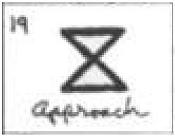

— Katherine Neville, The Eight
|
“What does this have to do with why we’re here?”
“I saw it in a chess book Mordecai showed me. The most ancient chess service ever discovered was found at the palace of King Minos on Crete– the place where the famous Labyrinth was built, named after this sacred axe. The chess service dates to 2000 B.C. It was made of gold and silver and jewels…. And in the center was carved a labrys.” … “But I thought chess wasn’t even invented until six or seven hundred A.D.,” I added. “They always say it came from Persia or India. How could this Minoan chess service be so old?” “Mordecai’s written a lot himself on the history of chess,” said Lily…. “He thinks that chess set in Crete was designed by the same guy who built the Labyrinth– the sculptor Daedalus….” Now things were beginning to click into place…. “Why was this axe carved on the chessboard?” I asked Lily, knowing the answer in my heart before she spoke. “What did Mordecai say was the connection?”…. “That’s what it’s all about,” she said quietly. “To kill the King.” The sacred axe was used to kill the King. The ritual had been the same since the beginning of time. The game of chess was merely a reenactment. Why hadn’t I recognized it before? |
|
“But what does it all mean?” asked Susan when they were somewhat calmer. “It means,” said Aslan, “that though the Witch knew the Deep Magic, there is a magic deeper still which she did not know. Her knowledge goes back only to the dawn of Time. But if she could have looked a little further back, into the stillness and the darkness before Time dawned, she would have read there a different incantation. She would have known that when a willing victim who had committed no treachery was killed in a traitor’s stead, the Table would crack and Death itself would start working backward.” |
Tuesday, December 6, 2005
Tuesday December 6, 2005
'Year of Magical Thinking'
Headed for Broadway
which suggests…
Heaven, Hell,
and Hollywood
(continued)
"This could be Heaven
or this could be Hell."
— The Eagles, Hotel California
"There are no facts,
there is no truth–
just data to be manipulated."
— Don Henley, The Garden of Allah
Data:
The New York Lottery numbers
on Joan Didion's birthday,
Monday, Dec. 5, 2005, were
Since that day's Log24 entry,
Magical Thinking, interpreted
the previous day's (Sunday's)
NY lottery numbers as a date
and a page number, it seems
appropriate to do a follow-up.
Date 7/29:
See Log24, 7/29/05,
Anatomy of a Death:

Page 439:
See Bartlett's Familiar
Quotations, 1919, p. 439:
A man’s ingress into the world
is naked and bare,
His progress through the world
is trouble and care;
And lastly,
his egress out of the world,
is nobody knows where.
— John Edwin (1749-1790)
Related material:
The Log24 version of
"This Way to the Egress,"
Directions Out,
linked to in yesterday's
Magical Thinking.
Tuesday December 6, 2005
In memory of…
CUERNAVACA, Mexico – Spanish singer Gloria Lasso, who made her name recording romantic ballads in Latin America and Paris, died in her sleep on Sunday at her home in Cuernavaca. She was 83.
|
Today's Harvard Crimson–
"Pudding Show Features
From yesterday's entry,
"At the still point,
Xanadu (1980) For related material, see
Balanchine's Birthday (1/9/03) |
For more on Balanchine,
Olivia Newton-John, Sunday,
and Eliot's "still point,"
see the previous entry.
For more Harvard humor,
see The Crimson Passion.
Monday, December 5, 2005
Monday December 5, 2005
The Associated Press on the Kennedy Center honors yesterday:
"Dancer Suzanne Farrell was feted by her former colleague at the New York City Ballet, Jacques d'Amboise. The company, led by George Balanchine, 'was the center of American ballet and she was the diamond in its crown,' d'Amboise said."
As Sir Arthur Quiller-Couch, paraphrasing Horace, remarks in his Whitsun, 1939, preface to the new edition of the Oxford Book of English Verse, "tamen usque recurret Apollo."
The mid-day number was 926;
the evening number was 373.
For the significance of 926,
see 9/26 2002 and
Balanchine's Birthday.
For the significance of 373, see
Art Wars,
May 2, 2003,
White, Geometric, and Eternal,
Dec. 20, 2003,
Directions Out,
April 26, 2004,
Outside the World,
April 26, 2004,
The Last Minute,
Sept. 15, 2004,
and
Diamonds Are Forever,
Jan. 25, 2005.
See also the link
at the end of
yesterday's entry.
For related material that is
more personally linked to
Joan Didion, see
Log24, June 1-16, 2004.
Sunday, December 4, 2005
Sunday December 4, 2005
12/4
Related material:
From Log24,
back in time
a year and a day:
On December 3…
In 1947,
“A Streetcar Named Desire“
opened on Broadway.
In 1953,
the musical “Kismet“
opened on Broadway.
In 1960,
the musical “Camelot“
opened on Broadway.
| See also a review of recent poetry by Paul Mariani– “Vivid images sometimes shine and Epiphany 2005. |
Saturday, December 3, 2005
Saturday December 3, 2005
Works and Days
“So, after all, there was not one kind of Strife alone, but all over the earth there are two…. For one fosters evil war and battle, being cruel: her no man loves; but perforce, through the will of the deathless gods, men pay harsh Strife her honour due.”
On this date in 1944, “A bitter civil war broke out in Athens….”
“Cambridge was colder and darker and offered even fewer distractions than before the war. By June, 1943, Minakis had done the maths tripos with honors…. He read Cavafy and Seferis and T.S. Eliot:
There will be time, there will be time
To prepare a face to meet the faces that you meet;
There will be time to murder and create,
And time for all the works and days of hands
That lift and drop a question on your plate…
Minakis was happy for his colleagues when the war ended but felt little on his own account or that of the country he had left; the Greek government was a British prop that could not feed its people, the Communists and the Monarchists were at one another’s throats like savage dogs, and civil war was inevitable.
Better to return to grim Cambridge….”
Friday, December 2, 2005
Friday December 2, 2005
“… a purely harmonious concept of beauty is not enough…. Apollo, who for Plato’s Socrates was ‘the God’ and the guarantor of unruffled beauty as ‘the truly divine’ is absolutely no longer sufficient.”
symbol of Apollo

as the source of
a Christian symbol–

the Greek Cross.
Related material:
The play
“now then again“
(Time-Bending Love Story
Comes Home to Fermilab)

with cover art by Roz Francis
illustrating the time 8:05:19,
Hexagram 19 in the
Cullinane series

(“A dance results”
— Marie-Louise von Franz),
and
Paul Preuss on Apollo,
quantum physics, and
the isle of Delos.
Friday December 2, 2005
Proof 101
From a course description:
“This module aims to introduce the student to rigorous university level mathematics….
Syllabus: The idea of and need for mathematical statements and proofs…. proof by contradiction… proof by induction…. the infinite number of primes….”
In the December Notices of the American Mathematical Society, Brian (E. B.) Davies, a professor of mathematics at King’s College London, questions the consistency of Peano Arithmetic (PA), which has the following axioms:
From BookRags.com—
Axiom 1. 0 is a number.
Axiom 2. The successor of any number is a number.
Axiom 3. If a and b are numbers and if their successors are equal, then a and b are equal.
Axiom 4. 0 is not the successor of any number.
Axiom 5. If S is a set of numbers containing 0 and if the successor of any number in S is also in S, then S contains all the numbers.
It should be noted that the word “number” as used in the Peano axioms means “non-negative integer.” The fifth axiom deserves special comment. It is the first formal statement of what we now call the “induction axiom” or “the principle of mathematical induction.”
Peano’s fifth axiom particularly troubles Davies, who writes elsewhere:
I contend that our understanding of number should be placed in an historical context, and that the number system is a human invention. Elementary arithmetic enables one to determine the number of primes less than twenty as certainly as anything we know. On the other hand Peano arithmetic is a formal system, and its internal consistency is not provable, except within set-theoretic contexts which essentially already assume it, in which case their consistency is also not provable. The proof that there exists an infinite number of primes does not depend upon counting, but upon the law of induction, which is an abstraction from our everyday experience….
… Geometry was a well developed mathematical discipline based upon explicit axioms over one and a half millennia before the law of induction was first formulated. Even today many university students who have been taught the principle of induction prefer to avoid its use, because they do not feel that it is as natural or as certain as a purely algebraic or geometric proof, if they can find one. The feelings of university students may not settle questions about what is truly fundamental, but they do give some insight into our native intuitions.— E. B. Davies in
“Counting in the real world,”
March 2003 (word format),
To appear in revised form in
Brit. J. Phil. Sci. as
“Some remarks on
the foundations
of quantum mechanics”
Exercise:
Discuss Davies’s claim that
The proof that there exists an infinite number of primes does not depend upon counting, but upon the law of induction.
Cite the following passage in your discussion.
It will be clear by now that, if we are to have any chance of making progress, I must produce examples of “real” mathematical theorems, theorems which every mathematician will admit to be first-rate.
… I can hardly do better than go back to the Greeks. I will state and prove two of the famous theorems of Greek mathematics. They are “simple” theorems, simple both in idea and in execution, but there is no doubt at all about their being theorems of the highest class. Each is as fresh and significant as when it was discovered– two thousand years have not written a wrinkle on either of them. Finally, both the statements and the proofs can be mastered in an hour by any intelligent reader, however slender his mathematical equipment.
I. The first is Euclid’s proof of the existence of an infinity of prime numbers.
The prime numbers or primes are the numbers
(A) 2, 3, 5, 7, 11, 13, 17, 19, 23, 29, …
which cannot be resolved into smaller factors. Thus 37 and 317 are prime. The primes are the material out of which all numbers are built up by multiplication: thus
666 = 2 . 3 . 3 . 37.
Every number which is not prime itself is divisible by at least one prime (usually, of course, by several). We have to prove that there are infinitely many primes, i.e. that the series (A) never comes to an end.
Let us suppose that it does, and that
2, 3, 5, . . . , P
is the complete series (so that P is the largest prime); and let us, on this hypothesis, consider the numberQ = (2 . 3 . 5 . . . . . P) + 1.
It is plain that Q is not divisible by any of
2, 3, 5, …, P;
for it leaves the remainder 1 when divided by any one of these numbers. But, if not itself prime, it is divisible by some prime, and therefore there is a prime (which may be Q itself) greater than any of them. This contradicts our hypothesis, that there is no prime greater than P; and therefore this hypothesis is false.
The proof is by reductio ad absurdum, and reductio ad absurdum, which Euclid loved so much, is one of a mathematician’s finest weapons. It is a far finer gambit than any chess gambit: a chess player may offer the sacrifice of a pawn or even a piece, but a mathematician offers the game.
— G. H. Hardy,
A Mathematician’s Apology,
quoted in the online guide for
Clear and Simple as the Truth:
Writing Classic Prose, by
Francis-Noël Thomas
and Mark Turner,
Princeton University Press
In discussing Davies’s claim that the above proof is by induction, you may want to refer to Davies’s statement that
Geometry was a well developed mathematical discipline based upon explicit axioms over one and a half millennia before the law of induction was first formulated
and to Hardy’s statement that the above proof is due to Euclid.
Thursday, December 1, 2005
Thursday December 1, 2005
Campion’s Day
Today is the feast of the Catholic saint Edmund Campion. Campion, a Jesuit with a graceful prose style, would perhaps not be too deeply offended by the fact that his surname is now best known in some circles as that of a fictional character– the “Albert Campion” of Margery Allingham‘s detective stories.
The following is from a web page devoted to Allingham’s fiction, Roger Johnson’s “Thoughts on Mr. Campion and His Family.”
This is not of course to say that Albert Campion’s family are Roman Catholics: indeed, all the evidence is that they are Church of England. However, the fact does suggest a couple of interesting minor parallels with Mr Rudolph K–. St. Edmund Campion necessarily spent most of his mission in England incognito. And, perhaps more pertinently, the campion is a small hardy English wild flower – like the scarlet pimpernel, in fact. And the younger Albert Campion is strongly in the tradition of the apparently effete aristocrat Sir Percy Blakeney, who achieved fame as the dashing hero known as the Scarlet Pimpernel.
Richard Martin says that the name is “a barely disguised sign,” being the old French word for “champion.”
The non-fictional St. Edmund Campion is of course remembered also, for instance in the names of Campion College in suburban Sydney, of Campion College at the University of Regina and of Campion Hall at the University of Oxford.




 exist; if they do, they might ultimately play some role in the metaphysics of language.”
exist; if they do, they might ultimately play some role in the metaphysics of language.”
